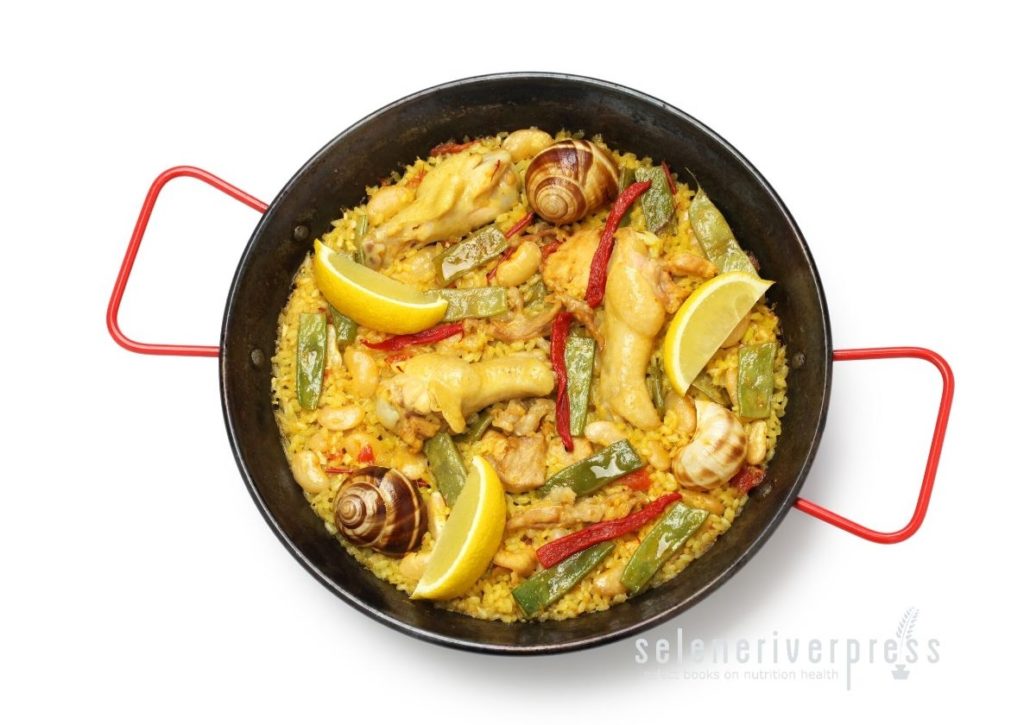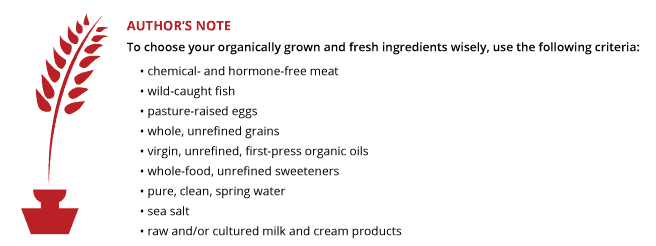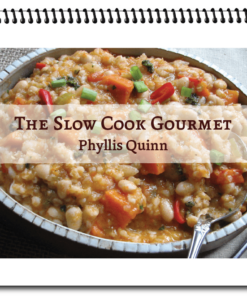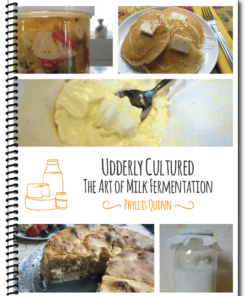In a post from about six years ago, I wrote about feasting (and I do mean feasting) on paella at a restaurant called Trader Vic’s in Puerto Rico. It was a truly memorable and romantic evening in February.
Back in early 1960s, many in-the-know New Yorkers would jet off to sunny Puerto Rico to escape the dreary winter in the city. That is, if they were lucky enough to find a plane ticket. Way back in 1963, when I was young, I was one of those lucky people. (But that, as I’m so fond of saying, is another interesting story, about a well-kept secret recipe. I’m grateful that my world is full of great recipes and adventures, and I’m so grateful that I can share them with you through Selene River Press.)
Paella is the famed rice dish of Spain. Valencia-style paella is served at Spanish restaurants all over the world—and if you’ve been fortunate enough to visit Valencia, you probably tried two or three different variations, at least!
The original recipe for paella dates back to the 1800s. It consists of saffron-scented rice cooked with rabbit, pork, chicken, beans, and/or a similar protein, as well as some kind of seafood. I once ate a magnificent paella in the Caribbean islands with all of these ingredients and more: mussels, clams, shrimp, sausages, and chicken. I was told that the dish often changes with whatever local, fresh ingredients that are in season.
However, let me say here that paella is seldom out of season (it’s also a high-priced specialty that the island restauranteur wants you to buy). But if it did have a season, it would surely be the time between Mardi Gras and Easter Sunday. And as paella has grown in popularity, so have paella pans. Though these low, wide pans (about 18 inches across) are specifically for paella, you can make the dish in any wide skillet of the same size.
In this post, it is my aim to take the mystery out of paella and talk about the basic traditional steps and ingredients. All paellas start with a sofrito, which you may know as “mirepoix.” This is a flavor base of chopped vegetables cooked in oil, plus rice that is flavored and colored with saffron. Here’s how to make your own specialty paella with any time you want it, with seasonal ingredients (which, in my opinion, should always be your first choice).
Paella
Chef’s note: This is a festive one-pot meal that your family and guests will think you spent hours to prepare! Serve with a salad of baby greens dressed in Spanish olive oil and red wine vinegar and pass around a crusty rustic bread at the table. The sofrito is the main building block of flavor and the first step to a great paella.
Ingredients
For the sofrito:
¼ cup olive oil
1 tablespoon butter
1 red bell pepper, diced
1 green pepper, diced
1 medium onion, diced
3 cloves garlic, sliced
Fresh rosemary leaves, removed from the stem and chopped
1 teaspoon sweet or spicy paprika
For the paella:
15–20 saffron threads, crushed (about ¼ teaspoon saffron powder)
½ cup olive oil
1 lb. boneless skinless chicken thighs, cut into 1½ inch cubes
1 lb. fresh rabbit, pork, or chorizo, cut into 1½-inch cubes or chunks
1 teaspoon each sea salt and black pepper
2 teaspoons smoked Hungarian paprika (pimenton)
½ lb. frozen lima beans, thawed
½ lb. green beans, cut into 1-inch pieces
3 cloves garlic, minced
1 (15 oz.) can fire-roasted petite-diced tomatoes
7 cups chicken broth
36 canned snails, rinsed and drained, or 16 large shrimp, cut in half
2½ cups uncooked Spanish bomba rice or organic brown Basmati rice
Special equipment: paella pan or 18-inch skillet
Instructions
- First, make the sofrito: In a small frying pan, heat the oil and butter. Add all remaining ingredients and cook until the vegetables are limp and the spices are fragrant and dark in color (not burned). Set aside and keep in readiness for the paella.
- Put the saffron in ⅓ cup water and steep 15 minutes, then set aside. Meanwhile, heat oil in the skillet. Season chicken (and rabbit or pork, if using), with salt and pepper. Sauté meat about 6 minutes, turning often, until browned.
- Add paprika, lima beans, green beans, garlic, and tomatoes to pan. Cook, stirring occasionally, until garlic is soft, about 5 minutes. Add saffron mixture, broth, and snails or shrimp. Bring to a soft rolling boil (this takes about 12 minutes). Add the sofrito. Stir well. Taste and adjust seasonings if necessary.
- Add rice and cook only until just absorbed, but still al dente, about 5 minutes. Remove pan from heat. Cover and let rest for 5 minutes before serving.
Image from iStock/bonchan.





